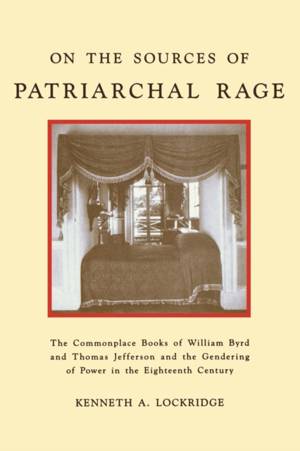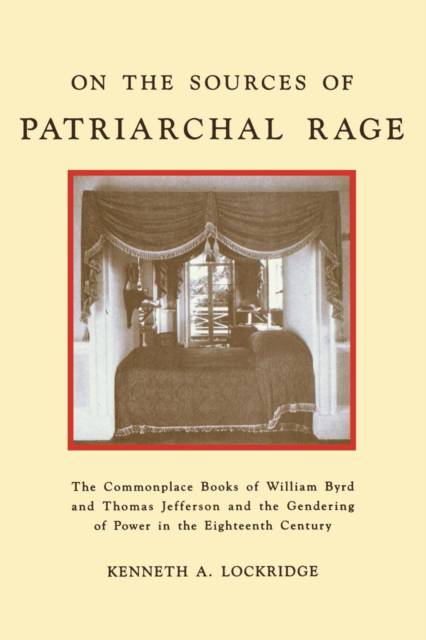
- Retrait gratuit dans votre magasin Club
- 7.000.000 titres dans notre catalogue
- Payer en toute sécurité
- Toujours un magasin près de chez vous
- Retrait gratuit dans votre magasin Club
- 7.000.000 titres dans notre catalogue
- Payer en toute sécurité
- Toujours un magasin près de chez vous
On the Sources of Patriarchal Rage
The Commonplace Books of William Byrd and Thomas Jefferson and the Gendering of Power in the Eighteenth Century
Kenneth A LockridgeDescription
"A brilliant . . . analysis of the fragile hegemony and identities of colonial Virginia's elite men. . . . On the Sources of Patriarchal Rage compellingly illuminates the ragged edge where masculinity and colonial identity meet. . . . [the book] will undoubtedly send Jefferson scholars scurrying back to their notes. . . . Most significant, by being among the first to tackle the subject of masculinity in early America, Lockridge forces colonial scholars to reexamine the lives of men they thought they already knew too well."
--William and Mary Quarterly
Two of the greatest of Virginia gentlemen, William Byrd II and Thomas Jefferson, each kept a commonplace book--in effect, a journal where men were to collect wisdom in the form of anecdotes and quotations from their readings with a sense of detachment and scholarship. Writing in these books, each assembled a prolonged series of observations laden with fear and hatred of women. Combining ignorance with myth and misogyny, Byrd's and Jefferson's books reveal their deep ambivalence about women, telling of women's lascivious nature and The Female Creed and invoking the fallible, repulsive, and implicitly corruptible female body as a central metaphor for all tales of social and political corruption.
Were these private outbursts meaningless and isolated incidents, attributable primarily to individual pathology, or are they written revelations of the forces working on these men to maintain patriarchal control? Their hatred for women draws upon a kind of misogynistic reserve found in the continental and English intellectual traditions, but it also twists and recontextualizes less misogynistic excerpts to intensified effect. From this interplay of intellectual traditions and the circumstances of each man's life and later behavior arises the possibility one or more specific politics of misogyny is at work here.
Kenneth Lockridge's work, replete with excerpts from the books themselves, leads us through these texts, exploring the structures, contexts, and significance of these writings in the wider historical context of gender and power. His book convincingly illustrates the ferocity of early American patriarchal rage; its various meanings, however suggestively explored here, must remain contestable.
Spécifications
Parties prenantes
- Auteur(s) :
- Editeur:
Contenu
- Nombre de pages :
- 148
- Langue:
- Anglais
- Collection :
Caractéristiques
- EAN:
- 9780814750896
- Date de parution :
- 01-09-94
- Format:
- Livre broché
- Format numérique:
- Trade paperback (VS)
- Dimensions :
- 148 mm x 227 mm
- Poids :
- 235 g







